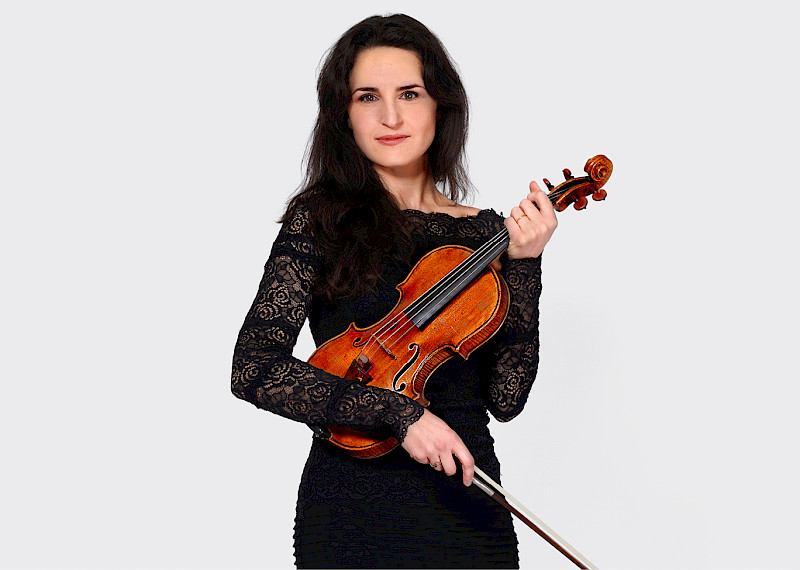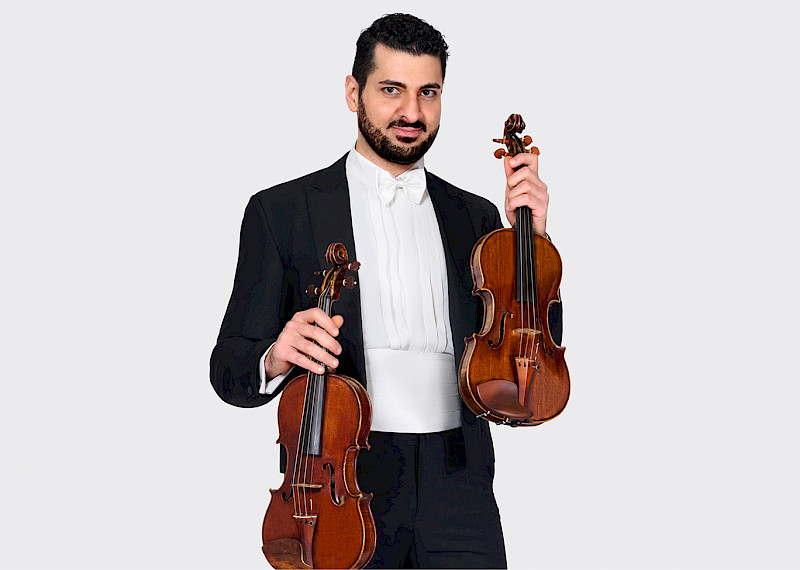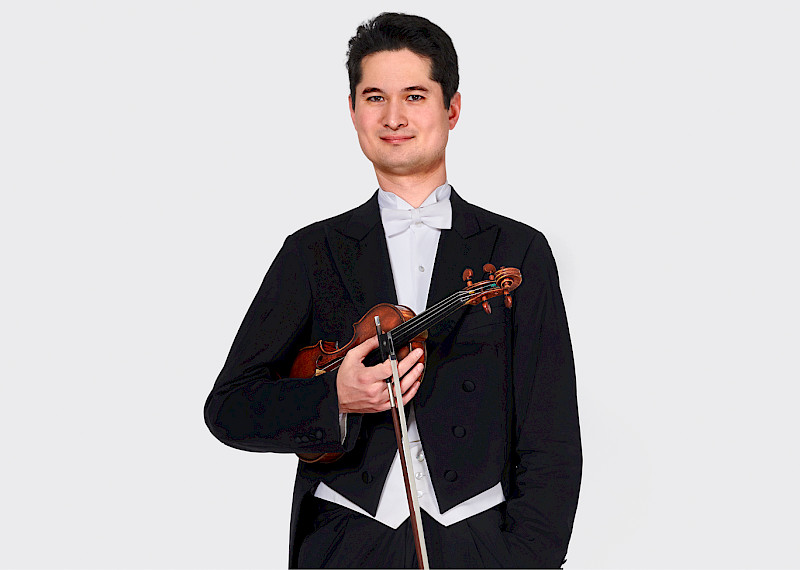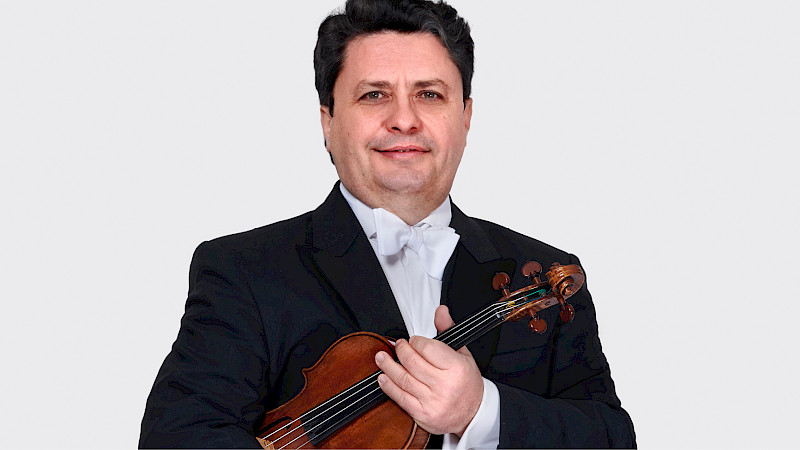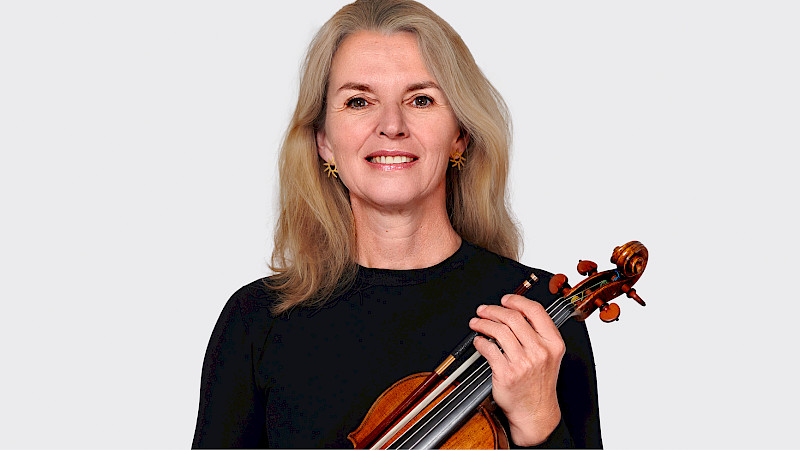
Violin stories - Part 2
Violins can be a piece of history, a piece of home - or even a kind of orange cat.
Which violins are played in our orchestra? Who made them and what character do they have? In our focus on violins, ten musicians talk about their instruments: Here they are Vanessa Szigeti, Alican Süner and Andreas Janke, with photos by Paolo Dutto.
Vanessa Szigeti, section leader 2nd violin
Stefano Scarampella, Mantua 1900
"My violin has a slightly orange colour, and that fits: It's a bit like an orange cat, which are considered strange. It reacts extremely sensitively to changes in temperature and humidity, and it has a slightly twisted scroll - for whatever reason. But it sounds marvellous, I especially like its almost brat-like depth. I got it when I passed the university entrance exam; before that, my father played it. At first I missed my old violin; it was like driving a Twingo and getting a BMW, but you just love the Twingo. But that changed quickly. When I opened the case in my first violin-reading lesson at university, the teacher shouted: 'My violin! I was irritated - until it turned out that he had once sold the instrument to my father."
Alican Süner, 1st violin
Gaetano Guadagnini, Turin 1820, on loan / Nurgül Çomak, Istanbul 2022
"I play two violins, one historical and one newly made. Both are strung with gut strings; it's trickier because of the tuning, but I like the sound and it also works in a large orchestra. I often decide which instrument to use at short notice: sometimes I rehearse with one and then use the other for the concert. They are very different; the Guadagnini violin - which I'm holding here in my right hand - is muscular, while Nurgül Çomak's is much more delicate. My relationship with them is also different: with one I have a piece of history in my hand, with the other a piece of home. Nurgül Çomak is a very likeable young violin maker in Istanbul, the first woman in this profession in Turkey. It's nice to know the person who made an instrument, you immediately have a much more personal connection to it."
Andreas Janke, 1st concertmaster
Carlo Bergonzi, Cremona 1733-1739, on loan
"What I particularly like about this violin is its strong, dark, warm bass. It's a question of type, what you like - I always try the G string first on an instrument to see what the lower register has to offer. Here, I knew after three notes that it was right; violins are a bit like people, you're immediately drawn to some of them. This has nothing to do with the name, although it is significant here: Carlo Bergonzi is regarded as the last grand master of the Cremonese school. Only around 50 of his instruments have survived, which is another reason why he is not as much of a legend as Stradivari, in whose workshop he worked for a time. But when I mention to violin makers that I play a Bergonzi, they always open their eyes wide and want to see the instrument straight away."




